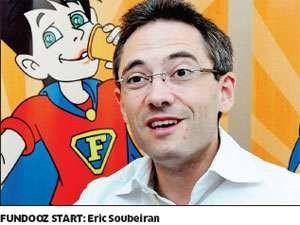
French dairy group, Groupe Danone, has recently set up an Indian business unit to promote products that target the mass markets or bottom-of-the-pyramid. With the launch of Fundooz, a milk-fortified dessert, Groupe Danone plans to develop low-cost healthy food products targeting small towns in which disposable incomes are low. In establishing its operations in India, Groupe Danone explains that it had conducted large amounts of consumer research through visits to schools, villages, and research agencies to better understand the market, consumer needs, and nutritional deficiencies. The large percentage of the population living under the poverty line in India and its status as the largest producer of milk, offers Groupe Danone a large opportunity to tap into a new market.
Groupe Danone has kickstarted its bottom-of-the-pyramid (BoP), or mass market, business by launching a milk-based fortified dessert called Fundooz in India.
The €17-billion French dairy giant has set up a country business unit for this venture. The division will innovate “at various levels for the BoP population” and, if successful, this business model will be exported to other markets, Danone (BoP) Director Eric Soubeiran told Ratna Bhushan in an interview. Excerpts:
Why India as the anchor destination for BoP products?
India is to be a beachhead market for us. There’s a 600-million base of pyramid here to address whom we can serve good, healthy, balanced foods. The potential is so huge. Children don’t have many healthy snacking options.
Besides, India is not the largest producer of milk in the world for nothing – there’s a demand and need for milk-based products here. Danone BoP’s agenda is to develop and market products that will mainly target smaller towns, where disposable incomes are low.
It took you three years to develop the new product. Isn’t that a long time?
Well, from idea to implementation it did take us three years. But we are working differently. From identifying suppliers, to setting up a plant at optimised costs, to understanding what consumers actually want, to patenting the formula – it takes that much time.
We went to schools, villages, cities, research agencies, trying to learn about the market, understanding food habits and nutritional deficiencies, particularly among young children. Then there are cold chain and logistics issues.
We also made sure that our product formulation is patented; it also has no colorants. Since affordability is a key objective for the BoP model, we are looking to innovate across functions – from manufacturing to distribution.
We have pioneered a business model, introduced a company-owned vending cart distribution system — a first for dairy distribution. It also helps in better backward integration.
Experience shows that BoP products haven’t had much success in India…
BoP is a huge learning. Companies need to develop products with the identified consumer, not for the identified consumer – that’s been the stumbling block for many products. I’m not naming them but there are so many examples – of products developed for BoP consumers but never reaching them.
Developing a strategy for BoP – that’s the romantic side. But getting the product to the consumer – that’s the real test. Understanding the route to market – how you get accessibility – is so important. Our strategy is to go down to the supply chain.
We are going to 1,200 outlets in six markets initially in general trade and 150 modern retail outlets across the six cities. Our first six markets are in the North – that’s because of proximity to our plant. We will make our product available in metros, smaller towns and cities. We will have our own network for cart vending.
I’m hopeful that by 2015, we will be in key markets in the country. In fact, over the next 12 months, we will have at least one more BoP product on the shelves.
These are low-margins products. When do you expect profits?
It’s all about how you right-size your investments. At Rs 5 and Rs 10, yes, the margins aren’t huge. But we have an investment structure that’s reasonably low. The organisation structure is lean – about 170 people.
Also, our plant in Sonepat is three-five times cheaper than the average cost of a dairy plant. Even our marketing plans will focus on high impact, minimal spills. Profits will come once we reach a good rotation of the products.
The perception is that Danone is going quite slow in India…
We have four verticals and each is moving ahead on target. In dairy, we have nine products – acorss dahi, flavoured yogurts and smoothies. We are in Mumbai, Hyderabad, Pune and Bangalore. That’s not slow.
Danone has a BoP model in Bangladesh. Is this similar?
Our philosophy is different for Bangladesh. The product, too, is very different. The Grameen-Danone initiative in Bangladesh offers affordable nutrition to children in Bangladesh with a fortified yogurt – Shokti Doi.
